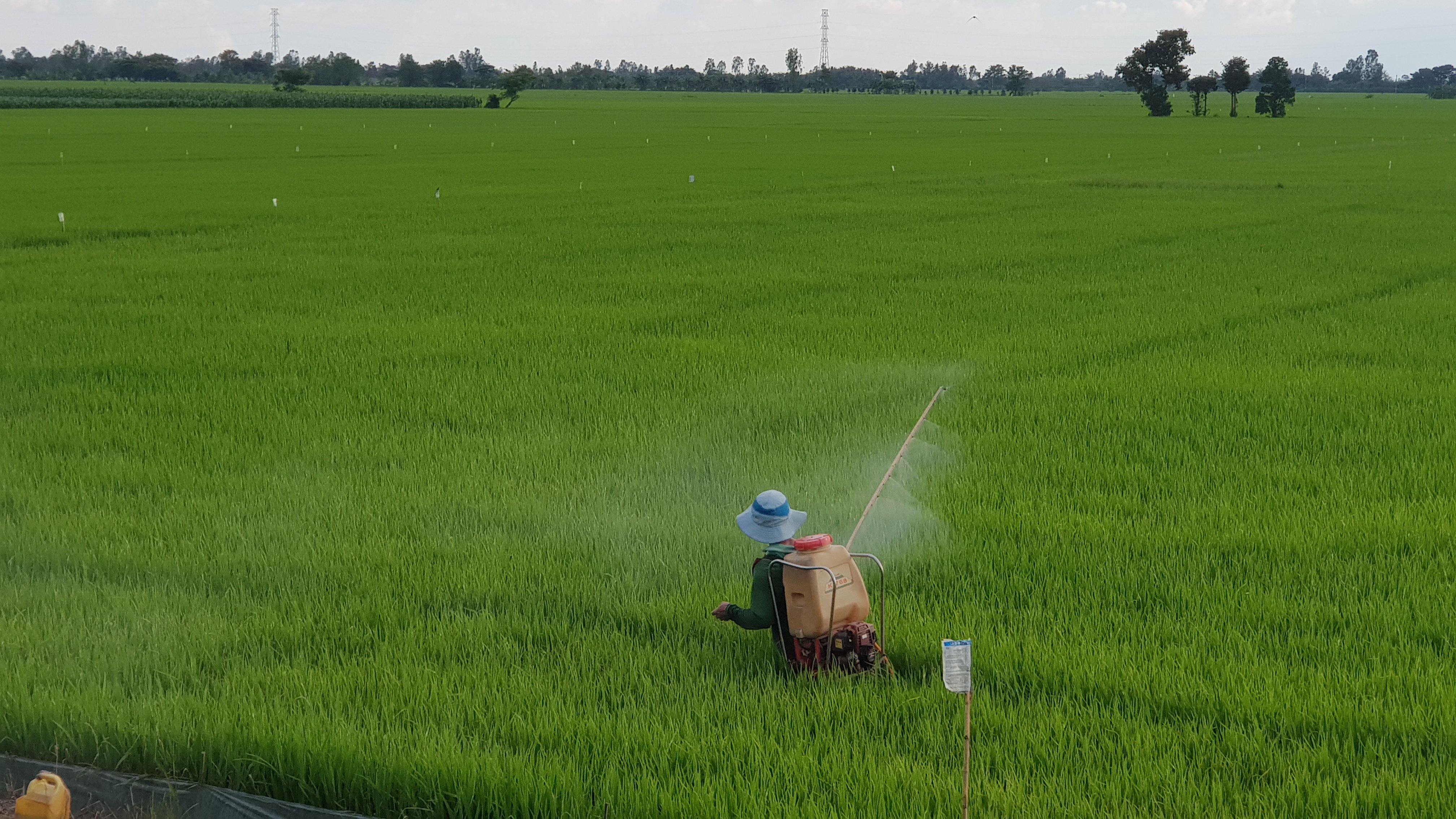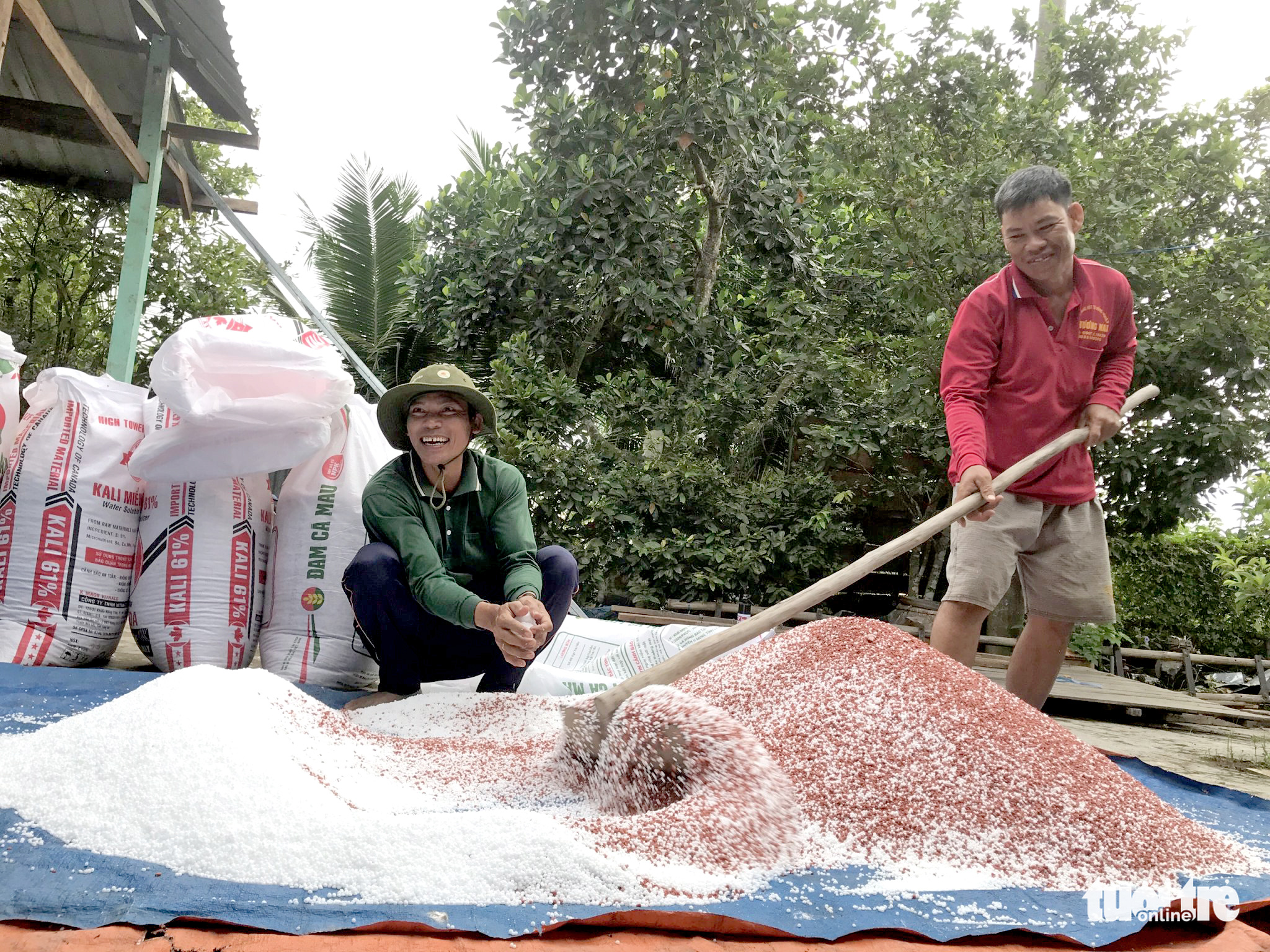Farmers in Vietnam’s Mekong Delta have been reducing the scale of their rice farming operations due to the rising cost of fertilizers, plant protection products, and labor.
Input costs for rice farming, namely fertilizers, agricultural materials, seeds, and labor, have surged since the beginning of this year, resulting in losses for farmers, according to Nguyen Trung Phuong, a resident in Vinh Long Province.
Fertilizers now sell at VND1-1.5 million (US$43-64) per bag, Phuong added.
To minimize his losses, Phuong and his family have scaled down the size of their rice paddy farm.
Aside from fresh water resources and weather conditions, operating cost have emerged as a serious concern for local farmers, according to Au Trong Huu, an agricultural official in Tan An Luong Commune in Vinh Long.
During the 2021-22 winter-spring farming season, the commune had a total of 800 hectares dedicated to rice farming.
That number shrank to 450 hectares during the summer-autumn crop, Huu elaborated.
A survey by the Vinh Long Province Department of Cultivation and Plant Protection revealed that fertilizers and plant protection products account for 33.1 percent and 14.6 percent, respectively, of rice production costs.
Officials in the province expected to have about 47,000 hectares of rice paddies in operation for the summer-autumn harvest, but only 29,000 hectares had been planted as of late April.
Nguyen Van Hien, head of the Department of Cultivation and Plant Protection in An Giang Province, stated that the agency is currently carrying out several programs to help local farmers reduce operating cost.
 |
| A farmer sprays pesticides on a rice paddy field in Vietnam’s Mekong Delta. Photo: Buu Dau / Tuoi Tre |
Farmers are advised to switch from inorganic to organic or microbial fertilizers to improve soil quality and minimize costs, Hien elaborated.
They have also been asked to cooperate with businesses or join local cooperatives in order to adopt safe and sustainable cultivation methods, he added.
An Giang planted more than 209,000 hectares of rice paddy in the summer-autumn crop of 2022, down 600 hectares year-on-year.
In Dong Thap Province, about 375,263 hectares of rice paddy have been planted so far this year, down 8,305 hectares against last year, according to the provincial Department of Agriculture and Rural Development.
The agricultural department has provided farmers with guidance on new farming methods and organic production models, as well as offered support in terms of sourcing organic fertilizers.
To make up for the most of empty rice paddy fields, the agency is planning to work with farmers to grow herbs, chili, taro, and banana under European standards.
There are certain difficulties and challenges involved in the transition to organic production, said Doan Van Tai, director of a farming cooperative in Vinh Long.
“Organic production requires high investment capital and a long time to improve the quality of the soil,” Tai continued.
“Without proper investment, farmers won’t be able to use organic fertilizers to their full potential.”
Like us on Facebook or follow us on Twitter to get the latest news about Vietnam!



















































